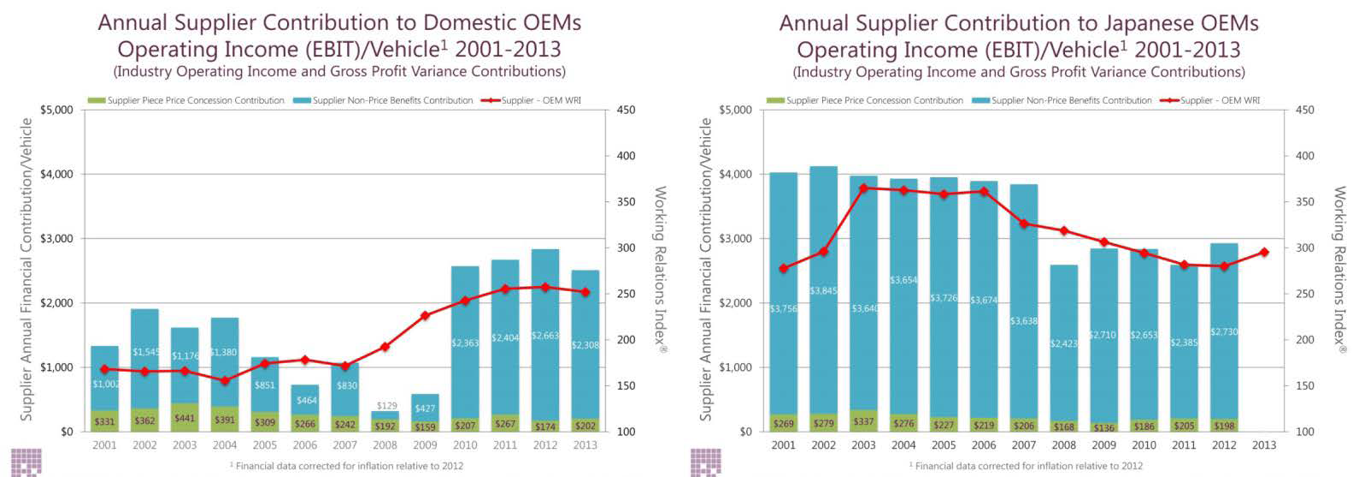 ‘Cash is King’, is what a former colleague of mine always used to say. In much of today’s procurement world, the focus is on financial-related actions like component/service price reduction, extension of payment terms, minimum inventory levels and supplier consolidation. Those are must have KPIs (Key Performance Indicators) every company should have, but a new report suggests that something is clearly missing.
‘Cash is King’, is what a former colleague of mine always used to say. In much of today’s procurement world, the focus is on financial-related actions like component/service price reduction, extension of payment terms, minimum inventory levels and supplier consolidation. Those are must have KPIs (Key Performance Indicators) every company should have, but a new report suggests that something is clearly missing.
John W. Henke, Jr., Ph.D. Professor of Marketing at Oakland University in Michigan and CEO of Planning Perspective Inc. in Birmingham, MI and his co-researcher, Professor Sengun Yeniyurt at Rutgers University Business School have confirmed the importance of ‘soft, non-price’ benefits; something many procurement professionals have intuitively known all along but struggled to express in clear business terms. Mr. Henke has developed and tracked the Working Relations Index® for more than 14 years. It clearly shows that good supplier relationships result in better profits and that ‘soft, non-price’ benefits (blue bars in the graphs below) contribute significantly more value than the actual pricing concessions (green bars below). This specific report illustrated the effect on US versus Japanese car OEMs.
These two graphs compare the US automakers (left) to the Japanese automakers (right) in return on supplier relations. Note how the vertical supplier contribution bars follow the red horizontal Working Relations Index line; the better the relations, the greater the supplier contribution (right); the more adversarial the relations, the smaller the contribution (left). Note in both cases the supplier price contribution (green bar) is only a fraction of the supplier non-price benefits contribution (blue bar). Finally, note how much greater is the total supplier contribution on average the Japanese automakers realize (right graph) than do the US automakers. Find the detailed report here . (Source: OEM Profitability and Supplier Relations)
It’s the Supplier Relationship, also often called the ‘soft benefits’, that really matters to overall profitability and success. I have seen this time and time again in my 25+ years in business. Soft benefits such as best-in-class customer service / project management that goes well beyond any contractual requirements, or better quality performance, or earlier access to new or lower cost technology significantly improved the ability to deliver a product below cost, on time, and with high quality.
A critical component to achieve this success is a solid supply chain strategy. Your company needs to be aligned with a supply chain that fits your business model, growth path and infrastructure. I found that this is seldom the case.
As a simple example; assume your company primarily serves the Automotive industry, traditionally a lower margin operations model. However, your supply base is generating most of its revenue in the Defense or Medical Device industries, a higher margin operations model. It will be very difficult, if not impossible, to develop the solid, mutually beneficial relationships needed for both to be successful. In this scenario your company will likely not be as cost competitive as it otherwise could be.
Therefore, having a well-developed and clearly defined supply base strategy is important, but just one of many considerations to achieve and maintain long term business success.
New Page Associates has developed a comprehensive Supply Chain Strategy model that helps companies to quickly and easily compare relevant supply chain information. The results will help you develop a sound supply chain strategy that aligns with your company’s goals, and will outline a sound path toward successful supplier relationships and ultimately increased overall profits.
Contact us at inquiry@newpageassociates.com for more information on how to establish or change your current supply chain model.
